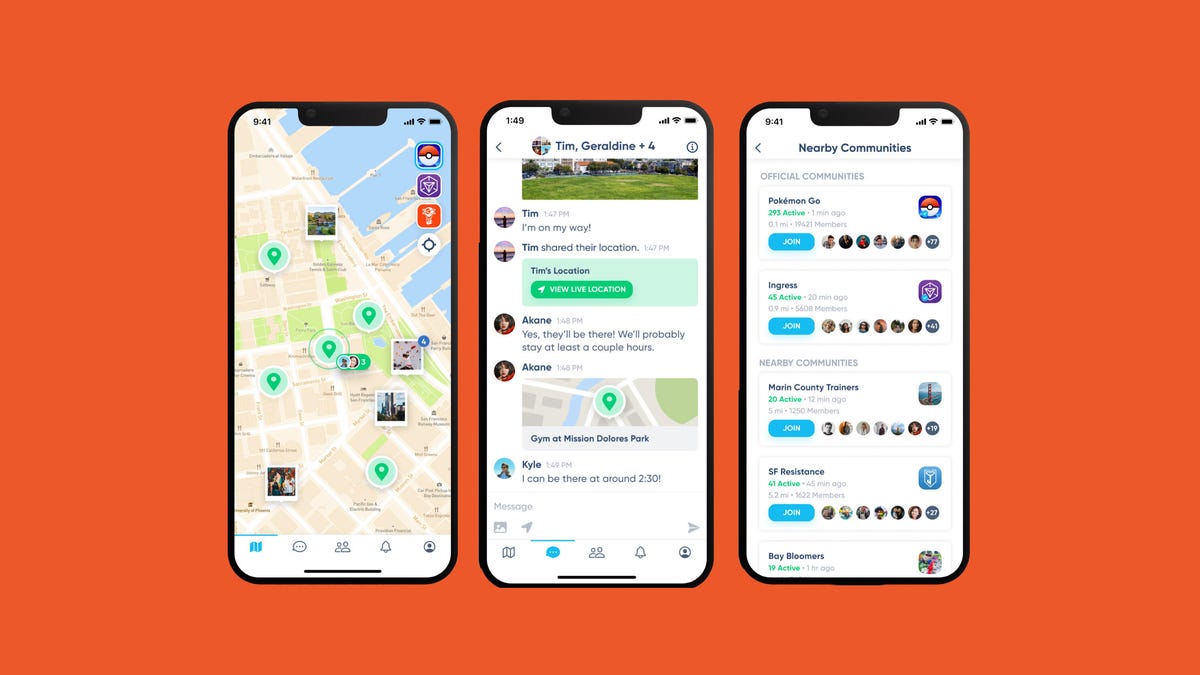Pokemon Go's New Social Network, Campfire, Is a Doorway to Niantic's AR Multiverse

Niantic's Campfire is a social network and chat app for its games. It could become even more.
What's happening
Pokemon Go creator Niantic is launching its own social network app, Campfire. It'll slowly become available for Pokemon Go players over the next few months.
Why it matters
Niantic's metaverse aspirations go beyond games to a future world of AR glasses. The company sees its map-enabled social network app as a necessary step.
What's next
Future Niantic games and even AR experiences could be connected to Campfire in the future. For now, it's a standalone phone app.
Finding your way to events in Pokemon Go is going to get easier. In fact, Niantic's building an entire map-enabled social network and messaging app just to help.
Campfire isn't just a tool for Pokemon Go players; it's aiming to be Niantic's social glue across all of its mobile games, and it'll eventually offer a doorway to its AR-connected experiences of the future. Think of it as Discord mixed with Google Maps, with a reality-channel browser possibility down the road. While it may not appear this way on the surface, Campfire is very much Niantic's next-step play for the metaverse.
The app, announced earlier this year at Niantic's developer-focused Lightship conference, started working in closed beta with Ingress players before beginning a slow rollout to some Pokemon Go players this week, with the app arriving globally over the next few months.
The separate app acts like a launcher or a browser for local events, and has local community groups sorted by game that can be joined. It's a way to jump into local events, or even create an event down the road when more interconnected apps using Campfire start to arrive.
The app shows events through a map in a standard 2D layout, with green "flares" that can be sent out to indicate where something interesting is going on. Those flares can be visible to anyone playing, making a sort of heat map on local events, but while they're public, they're also anonymous, and they only last for 10 minutes. The flares could be repeated by others, too, forming a real-time sense of where big game events might be. Alternatively, you could send another person on Campfire a one-hour location-based ping of where you are, but the app doesn't otherwise reveal player locations.
"We think there's going to be this natural kind of organic movement of players as they figure out where the cool stuff is," Niantic's Campfire lead, Ivan Zhou, told me as he demoed the app to me over video chat, showing how the chat and flare features would work while playing.
Using Campfire means swapping back and forth between Pokemon Go (or another Niantic game) and the app, although there's also a simplified heads-up display of Campfire's map that will also appear in Pokemon Go, too, minus the chat features.
Players have to be over 13 to use Campfire. The app will use Niantic account IDs, but will consolidate existing accounts from other Niantic games.
Campfire reminds me a lot of Discord, or Facebook Messenger and Groups. It's largely focused on connecting with friends and discovering group events. Zhou equates Campfire's standalone app launch as being similar to how Facebook Messenger started as a standalone app before eventually being integrated into Facebook, suggesting that more of Campfire's social network could land in Niantic's games over time.
But Niantic's larger-scale vision, as already outlined by CEO John Hanke, is one involving augmented-reality enabled experiences that can be seen on phones or with smart glasses. Niantic calls these separate AR universes "reality channels," and Campfire's ability to swap between several games is seen as a starting point for them and the way we'll browse them.
Campfire has its own icons that allow you to switch between views for different games, with others planned to enter the app over time. "We're bringing more and more content from our developers of our games to this surface area," says Zhou. "But we don't want you to flip through 500 different channels. So we're going to create this home experience where we're able to intelligently surface content to you and let you connect with that content with your friends."
Many of Niantic's games, including Pokemon Go and Pikmin Bloom, have AR features that use phone cameras to display virtual objects in the real world, but Campfire doesn't. Not yet, at least. Niantic's Zhou says that it's certainly a possibility for future updates, though. In much the same way that pop-up AR can already appear in other apps, Campfire might eventually enable the same.
"We're starting with this 2D surface area, but we've designed it knowing that it's going to inflate into a 3D surface area over time," Zhou adds. "And we think a lot about how we're setting the right foundation to start supporting more and more of that. I think the power of Campfire being across scientific experiences that we're building, as a first party, is we get to really define that kind of future ecosystem here."
As metaverse concepts continue dovetailing with social network models, other apps and games might follow this model, too.

